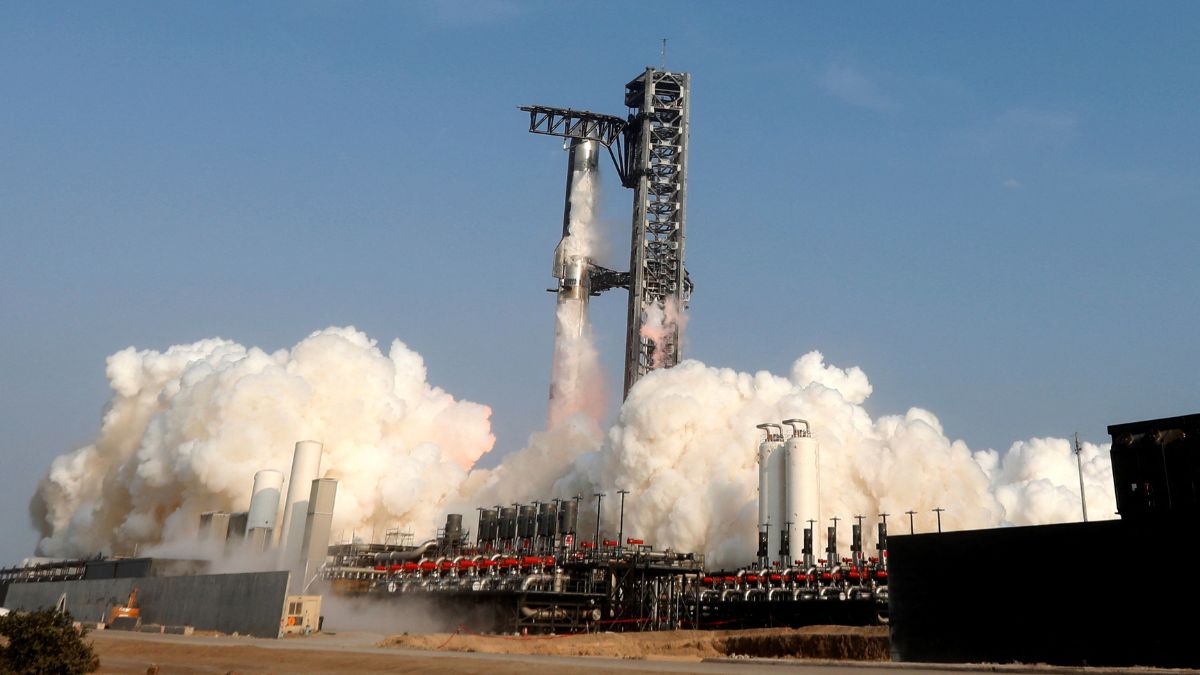Elon Musk’s SpaceX on Monday postponed the 10th launch of its Starship rocket in Texas, citing cloudy weather, turning the liftoff into a rehearsal instead. The attempt marked another delay in the company’s push to overcome development hurdles and prove the reusable design of the Mars rocket system.
The fully stacked Starship, a 232-foot Super Heavy booster topped by a 171-foot upper stage — stood on the launch pad at SpaceX’s Starbase facility, taller than New York’s Statue of Liberty, with millions of pounds of propellant loaded. But around 8:00 pm EST (0000 GMT), SpaceX called off the launch as poor weather was expected to persist throughout the window. A new attempt is planned for Tuesday at 7:30 pm EST (2130 GMT).
The scrub followed a liquid oxygen leak that forced SpaceX to abandon a Sunday launch. “In about 6 or 7 years, there will be days where Starship launches more than 24 times in 24 hours,” Musk wrote on X, while also appearing briefly on the company’s livestream to discuss Starship’s role in enabling human missions to Mars.
Despite repeated failures, including two early flight losses this year, a ninth-flight failure in orbit, and a massive test stand explosion in June that scattered debris into Mexico, SpaceX has leaned on its “test-to-failure” model, rapidly building new Starships at its expanding Starbase complex.
The rocket’s progress is key to Musk’s Mars ambitions, NASA’s plans to use Starship for a crewed moon landing by 2027, and the growth of SpaceX’s Starlink business, which relies on Starship to launch larger satellite batches than the Falcon 9 can handle.
Competitors like Jeff Bezos’ Blue Origin and United Launch Alliance’s Vulcan have taken a slower, ground-focused development path before debut flights. By contrast, SpaceX gathers data directly from flight failures to refine Starship’s design, from its powerful thrust to its experimental heat shield and reentry flaps, all crucial for reuse.
Impact Shorts
More ShortsWhenever it launches, Starship will lift off from Texas, separate from its booster — which will aim for a water landing, and attempt to deploy mock Starlink satellites before reentering Earth’s atmosphere over the Indian Ocean, testing its heat shield and steering flaps.
)